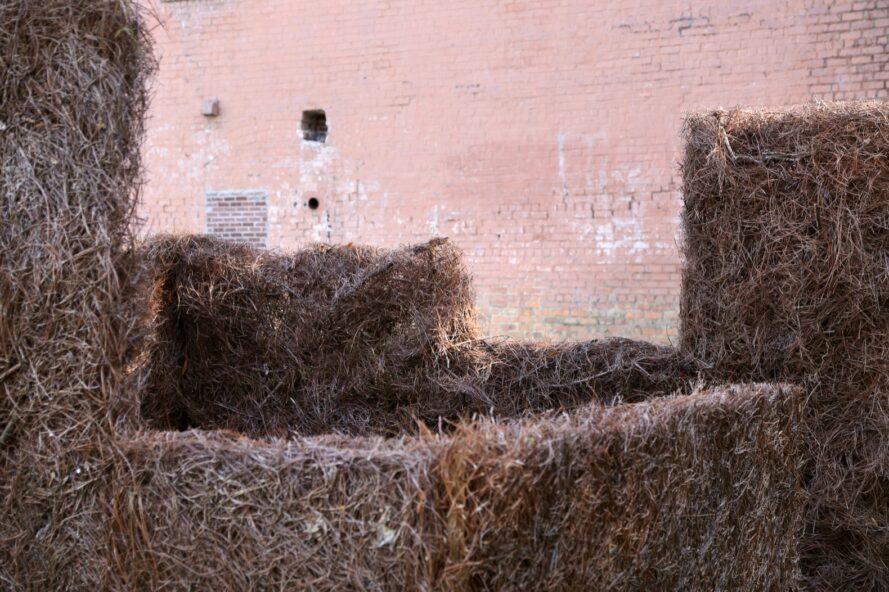Jokes aside, the structure was created using biocomposite panels. Each of these is made from fibrous biomaterials and is individually shaped for varying thickness. It’s a one-of-a-kind work that you won’t be able to find anywhere else, so don’t try and build the same thing with the grass from your garden without an expert. It won’t work.
MacDonald and Schumann dubbed their panel technique as ‘pillow forming’, and explain why it’s such a good approach to creating something so uniquely demanding as this.
‘Pillow forming allows for the design and construction of an infinite number of forms through a malleable process — the injection and removal of air — which can be repeated again and again’. You can create any shapes or sizes you want, which is a lot handier than, say, brick.

The panels are covered in pine needles as finishing touches, which results in a furry looking club house that kids would probably love to use as a makeshift den. Just make sure they don’t charge through those high-tech foliage walls and bring the whole thing crumbling down.
‘Homegrown’ was designed to promote an ‘alternative material ethic’. The designers want viewers to consider how we can use plant and forestry waste as tools for building, rather than simply treating it as useless scrap.

Quite often landscaping waste from domestic and commercial gardens can end up in landfill and generate both methane gas and acidic leachate. Using it for new structures like this helps to keep it away from places it shouldn’t be – and it looks neat, which is just as important.
Who knows, perhaps in the not too distant future we’ll all be creating sheds out of our leftover grass cuttings. Your local home appliances store will be quaking in its boots at the news.























